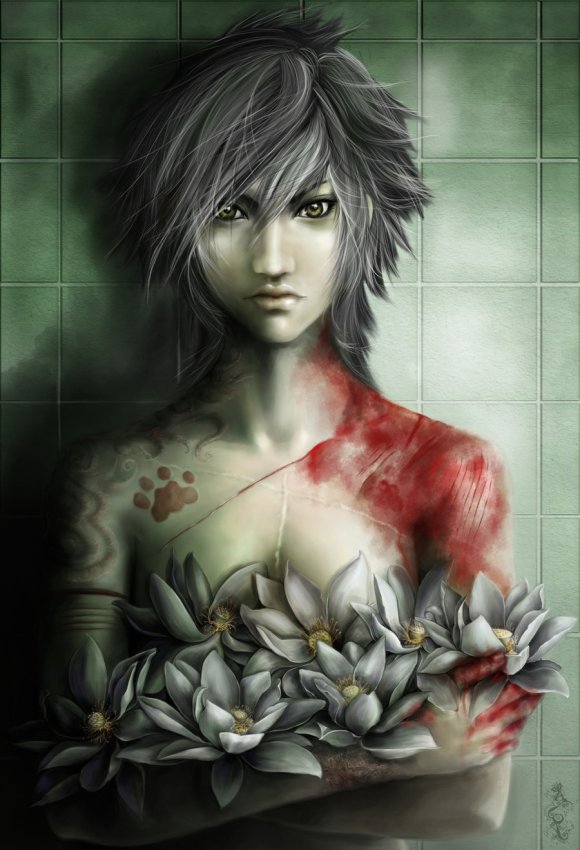Queen Boudicca Source: Hulton Archive/Getty Images
I’ve never been fully convinced of conservative social convections on femininity and how women should be passive, subservient and domesticated. My mother is the strongest woman I know and so I while I spent most of time growing up around my father and brother (whom each possess more than their fair share of “Alpha Male Ego”) there was and still is a strong feminine presence in my life.
For me, there has always been a fascination with the female warrior figure. I learned early in life that even though woman can appear demure and ladylike; under that veneer there is more likely than not; a core of iron. And there is a lot to admire and respect among strong feminine archetypes. Examples of strong historical female warriors include Artemisia I of Caria, Tomoe Gozen, Fù Hǎo, Joan of Arc and the ferocious celtic queen Boudicca. And despite coming from a fictional source, the positive influence garnered also from stories from folklore, novels and movies are undeniable. I think there’s a reverence in the strength of women; all kinds of them. Whether a fictional heroine, or capricious Goddess of myth and legend or a modern day female politician standing up against misogyny in male dominated parliament; women are strong and while not necessary of the physical sort, strength and honor is not exclusive to men.
The Crimson Lotus is In Bloom (2009)
“I was never deceived by Chinese women, not even by the flower-like lovely girls. They are the strongest women in the world. Seeming always to yield, they never yield. Their men are weak beside them. Whence comes this female strength? It is the strength that centuries have given them, the strength of the unwanted.”
– From Letter from Peking by Pearl S. Buck, 1957 (1)
In continuation to the subject of Gender Representation in the Arts I would like to take a piece of artwork that I had painted as a object of study. I chose my own painting for this experiment largely due to an interest in dissecting my own artistic psyche and I would also like to look at my painting with a fresh perspective as it was after all, completed three years age. It is a digital painting titled The Crimson Lotus is in Bloom and it features a female character I created named Ren which is the Japanese translation of lián (蓮) meaning lotus (2).
I’ve chosen this particular painting as an example to represent an expansion of the lecture’s theme because it explores the concepts of gender identity and androgyny. It depicts a human subject who is certainly female yet also possesses certain qualities that give her undefinably masculine and feminine characteristics. I wanted to paint a character who appeared young. deeply stricken but very strong. Despite the lack of expression on her face, there would be intensity in her eyes that would identify her as a strong person despite the physical evidence of violence that she carries along with an armful of lotus blossoms.
As the artist who painted Ren, I know her history, character and motivations intimately and so I painted her with the intention exposing her inner character and not her body. Whilst the majority of her physical nudity is concealed by the delicate lotus blossoms she is nude in the sense that it is her soul that is exposed. Every element in the painting from the her scars to the clinical background was chosen to represent Ren’s personality and state of mind. The predominantly green color palette represents nature, regeneration, honor, virtue and beauty (3) and the splashes of blood (that may or may not belong to Ren) in crimson red to bring her inner violence and her rage into context. It is meant to be a portrait and she appears nude and is carrying an armful of flowers. Her posing is a satirical approach to what is employed in traditionally demure portraiture and the lotus flowers, while also symbolising purity are mainly passive objects that absorb the color and mood of their surrounding environment. They are the symbols of Ren’s gentle womanly nature that is still a part of who she is.
In the case of scopophilia, Ren appears to be a prisoner in the portrait and is both the object being consumed but also the one consuming, in this case either the actual viewer themselves or an unseen character/s inside the world of the painting. It is possible that Ren is gazing at her own reflection thereby consuming herself. Whoever she is consuming with her stare, she remains stoic but defiant and vengeful too.
Ren is striking and beautiful but she is not an object of desire and yet she is also not an object of horror to soothe Freud’s castration anxiety by giving the male viewer a female object to conquer either. Her androgynous features are meant to offset and confuse the traditional norms of female beauty and to perhaps lead a male viewer into a sense of security. What they see is a figure who defies the gender binary system and hence traditional gender norms in not clearly definable in this case as Ren cannot be fit into a comfortable gender role. She is a rare creature and she is absolutely her own person. A woman warrior and Alpha female who will not sacrifice any part of her honor and integrity. She apologizes to no one and is prepared to retaliate in violence in order to protect herself and those that are under her protection.
But it is a very rare woman to be taken for who she truly is. And I would like to conclude that while I may be ambitious in my attempt in portraying my vision of a idealistic woman warrior whether I succeeded or not is entirely subjective to whomever is studying this piece of work.


